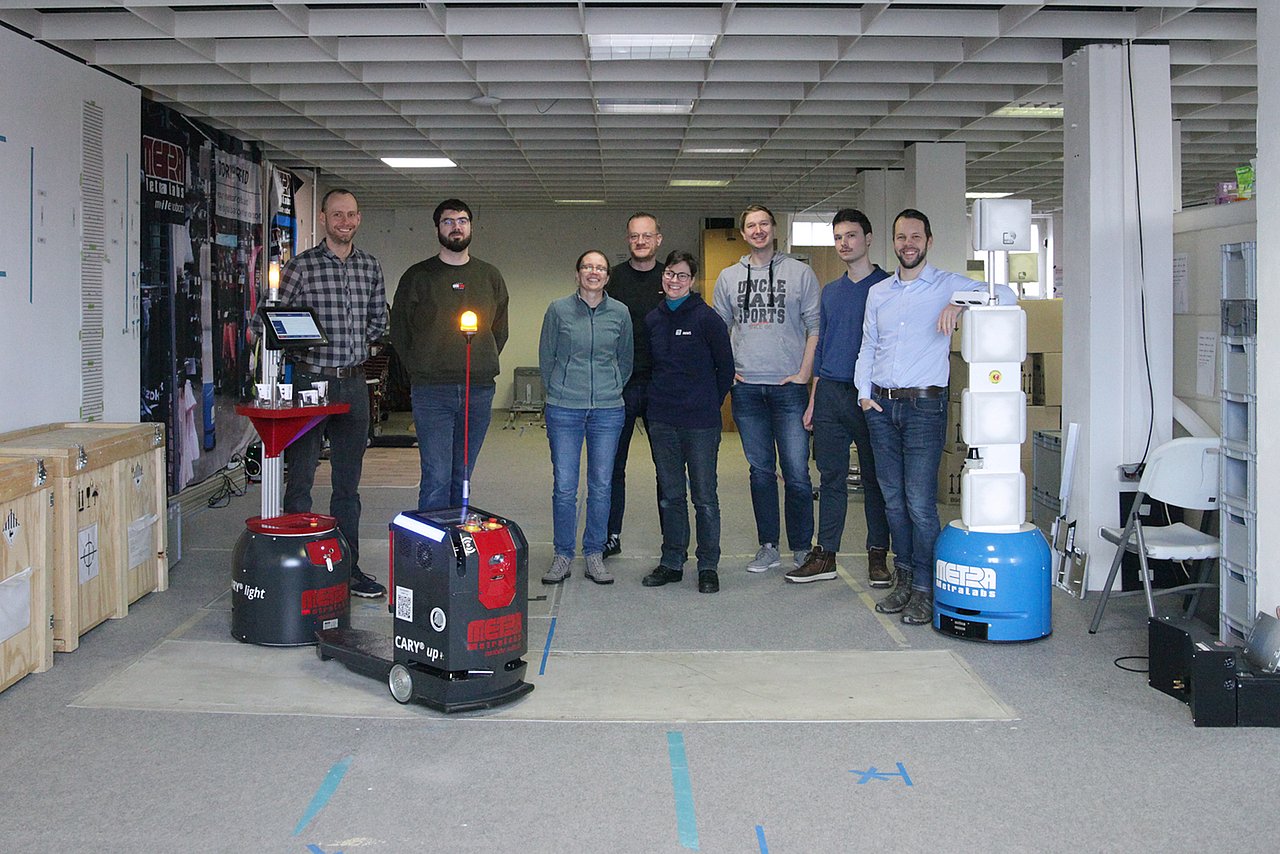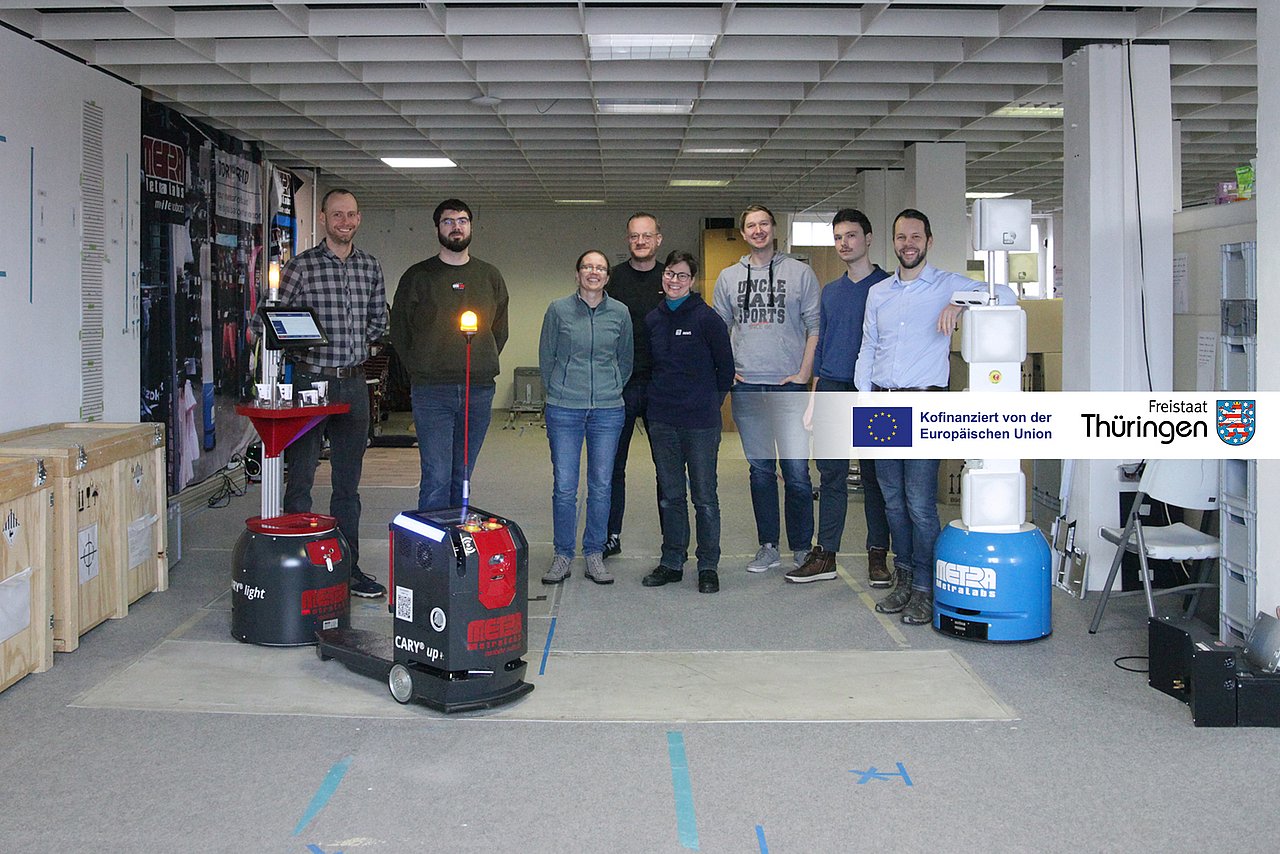Project ERA-AMR
Development and realisation of optimised drive systems for autonomous mobile robots
The aim is to develop new drive solutions for autonomous robots for a wide range of tasks and thus enable innovative production-related applications. Key to this is the development of a software-based modelling tool.
Autonomous mobile robots as assistants
Robotic systems can relieve workers of monotonous and repetitive tasks, especially in the industrial and service sectors, freeing them up for more demanding and varied tasks and increasing overall effectiveness and productivity.
Commercially available autonomous robots on the market are capable of travelling forwards, backwards and around bends with simple drives and can turn on the spot. In this way, they already contribute to an efficient material flow and smooth goods management in production and storage areas. They can not only transport goods, e.g. small load carriers for dynamically customisable production lines, but also record data, e.g. for quality assurance or autonomous inventories.
Versatility of assistant assignments limited
For a number of applications, systems with simple drives quickly reach their limits, such as with high loads or certain movements. Sideways movements or manoeuvring out of tight spaces, for example, are not possible.
More complex solutions for more flexible movements are more challenging to develop and therefore significantly more expensive. The reason for this is the drive system, which not only has to be designed, technically dimensioned and integrated into the overall system together with the sensors and control technology for a robust and powerful autonomous robot. Depending on the application, there are also other objectives and individual environmental conditions that need to be taken into account during development.
Optimised drive concepts and software-based modelling tool for new applications
The complex requirements not only call for advanced drive concepts that make autonomous mobile robots more efficient and economical on the basis of defined key figures.
For these technological improvements, IMMS will primarily work on a software-based modelling tool. This tool will support the development of these systems as early as the concept phase by calculating key figures for defined application and requirement profiles and enabling the selection of suitable solutions.
Mathematical approaches, methods and algorithms for kinematics and dynamics will be used for this purpose, which will not only optimise the drive system but also flow into the development of the autonomous control system. This control system will then take into account the previously set goals such as maximum speed, minimum energy consumption and high robustness and optimally implement the control tasks.
In the project, the partner MetraLabs will develop an optimal drive concept from all defined requirements using the new IMMS modelling tool and thus also a prototype for a new autonomous robot.
As a result, the approach aims to achieve a significant increase in performance compared to conventional drives, which can set new standards in mobile robotics and automation.
Acronym / Name:
ERA-AMR / Development and realisation of optimised drive systems for autonomous mobile robotsDuration:2025
Application:
Research institutions and ultra-precision mechanical engineering|mobile robotics| automation| transport| data acquisition| quality assurance| autonomous inventoriesResearch field:
Contact
Contact
Dr.-Ing. Ludwig Herzog
Head of Mechatronics
ludwig.herzog(at)imms.de+49 (0) 3677 874 93 60
Dr. Ludwig Herzog will provide detail on our research on magnetic 6D direct drives with nm precision for the nm measurement and structuring of objects. He supports you with services for the development of mechatronic systems, for simulation, design and test of MEMS as well as for finite element modelling (FEM) and simulation.
Funding
The joint project ‘ERA-AMR – Development and implementation of optimised drive systems for autonomous mobile robots’ is being supported by the funding programme of the German Land of Thüringen for the promotion of research, technology and innovation (RTI) as a research and development initiative Thüringen Verbund Dynamik and co-financed by the European Union under the reference 2024 VDY 0045.





![[Translate to English:] [Translate to English:]](/fileadmin/_processed_/9/0/csm_20200731_IMG_2732_K4PNP-INPOS_SG_1920x1280_7c70c69f8a.jpg)
